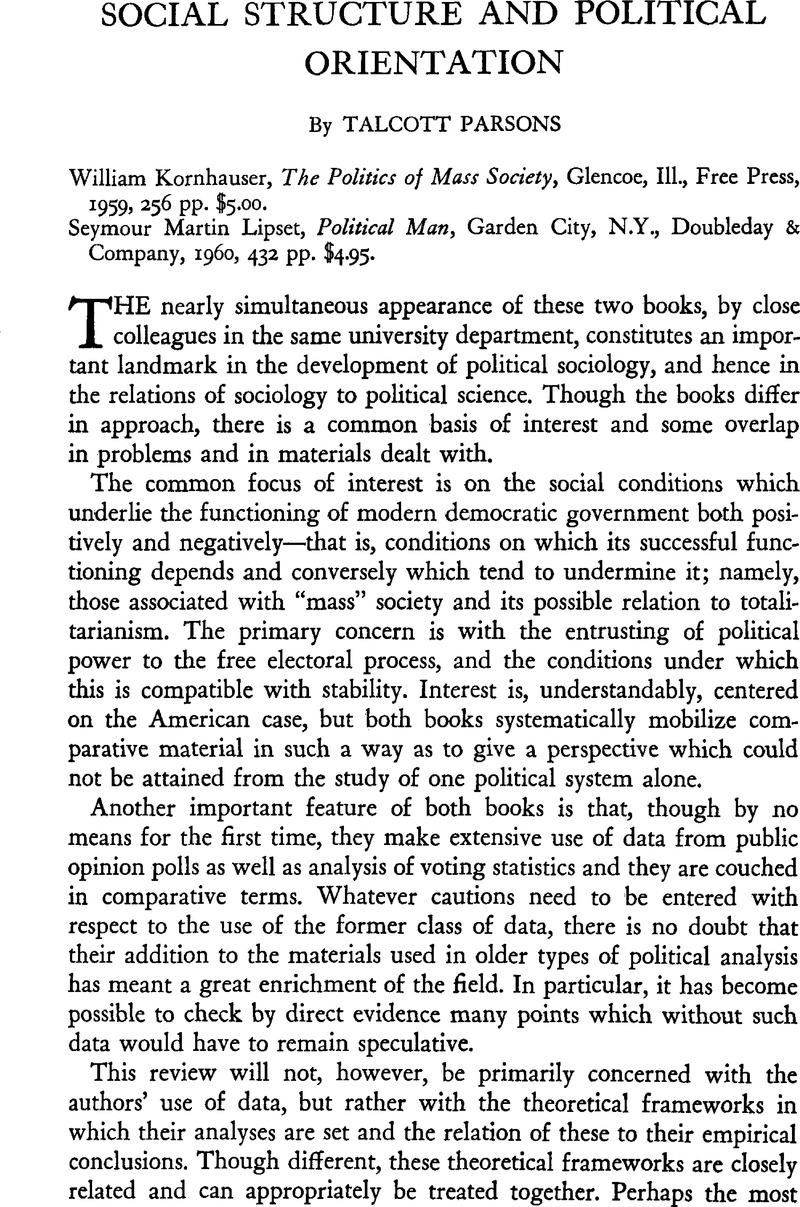Article contents
Social Structure and Political Orientation
Published online by Cambridge University Press: 18 July 2011
Abstract

- Type
- Review Articles
- Information
- Copyright
- Copyright © Trustees of Princeton University 1960
References
1 Thus it is well known that, at least until very recently, the main government of Harvard University has been in the hands of “solid men of Boston.” Harvard has certainly done its share in the education of their sons and the sons of others like them, but its function certainly has not been confined to that, as witness the steadily declining proportion of private-school boys admitted to Harvard College. These “upper-uppers” have promoted not simply a device for consolidating their own power and social position, but a national university in the broadest sense.
2 On McCarthyism in this connection, see Parsons, Talcott, Structure and Process in Modern Societies, Glencoe, Ill., 1960Google Scholar, ch. 7, “Social Strains in America.”
3 Cf. Berelson, Bernard, Lazarsfeld, Paul F., and McPhee, William N., Voting, Chicago, 1954.Google Scholar
4 On this point and the general functioning of the American electoral system, cf. my paper, “‘Voting’ and the Equilibrium of the American Political System,” in Burdick, Eugene and Brodbeck, Arthur J., eds., American Voting Behavior, Glencoe, Ill., 1959.Google Scholar
- 1
- Cited by




